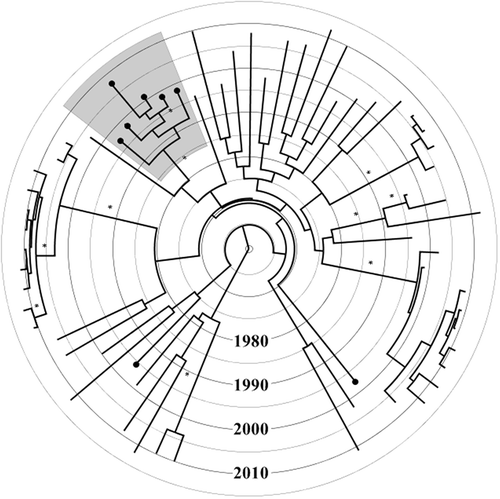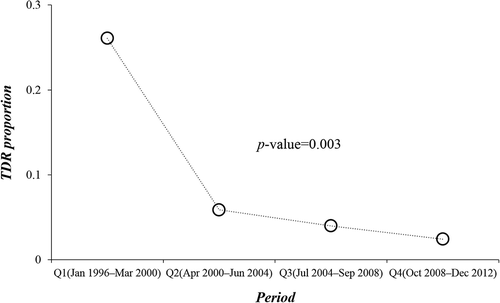Figures & data
Table 1. Characteristics of the HIV-1 infected individuals included in the study.
Table 2. Distribution of the study subjects compared to the total population of patients who were diagnosed during the same time interval.
Table 3. Characteristics of ART-naive patients with and without TDR.
Figure 1. Time-resolved maximum clade credibility tree of 63 subtype B Icelandic sequences. The tree was constructed using TreeAnnotator v1.8.0 included in BEAST software package. Branches with posterior probability value of 1.0 are marked with an asterisk. Terminal branches marked with a black circle at the tip represent sequences harbouring at least one transmitted drug resistance (TDR) mutation. The grey shaded area represents the monophyletic cluster with TDR mutation (T215C/D).

Figure 2. Temporal trend of transmitted drug resistance (TDR) over the study period. The horizontal axis represents the study period divided into four quarters, each of which represents 4.25 years. The vertical axis represents proportion of TDR in each quarter. The p-value indicates the result of trend analysis conducted using linear-by-linear test for association.

